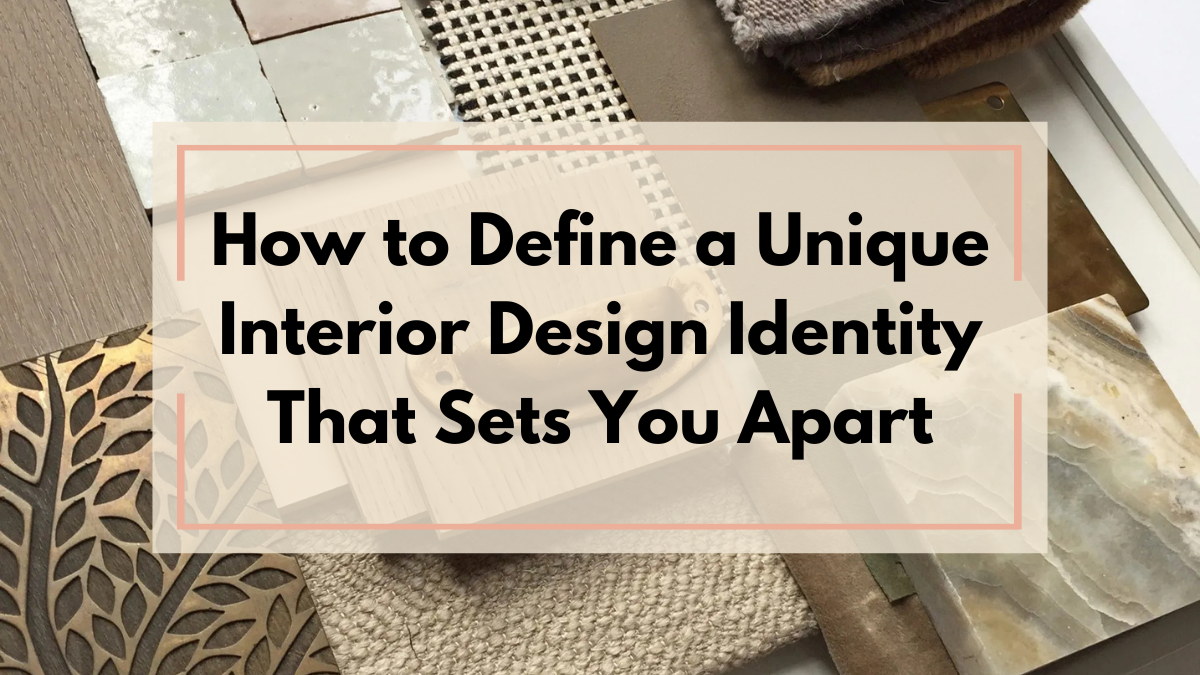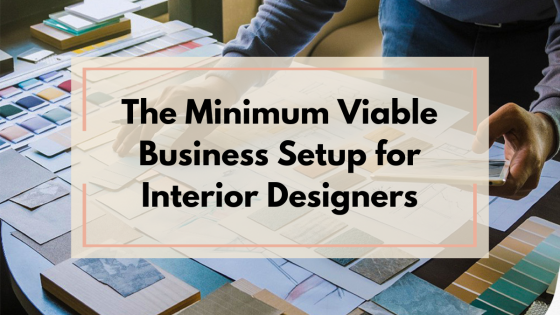How to Define a Unique Interior Design Identity That Sets You Apart

Let’s face it, interior design is a competitive world. And when you’ve been in the game for a few years, it can feel like everyone is offering the same service wrapped in slightly different mood boards. If you’re an experienced interior designer looking to scale your business, attract dream clients, and become known for something, then it’s time to refine your signature style.
Your signature style is about carving out a distinct identity that aligns with your values, attracts your ideal clients, and builds brand recognition. It's not just about the aesthetics. It’s that thing people recognize as uniquely you, even before they see your logo.
If you've ever wondered, "How do I create a signature style that not only reflects me but also brings in high-paying clients?", you're in the right place. Let’s dive into the steps to help you develop a style that makes your business unforgettable.
#1. Revisit Your Design Roots
Go back to the beginning. What drew you to interior design in the first place? Was it the thrill of transformation? The joy of storytelling through spaces? Reconnecting with your "why" gives you a compass to guide your aesthetic choices and business direction.Ask yourself:
- What design eras or elements consistently excite you?
- Which projects have felt most fulfilling?
- What compliments do you often get from clients?
This isn’t just a trip down memory lane, it’s a way to find recurring themes and emotional anchors in your work.
#2. Audit Your Portfolio
Your past projects hold the clues to your signature style. Look at your best work and notice the patterns:
- Color palettes you gravitate toward.
- Materials and textures you love.
- Room types you enjoy designing most.
Now, ask yourself: what do these choices say about your personality and values? Your portfolio isn’t just proof of your skills, it’s a visual language that you can refine to become instantly recognizable.

#3. Define Your Aesthetic Pillars
A signature style doesn’t mean you have to do the same thing every time. Instead, think in terms of pillars or guiding principles. For example:
- Minimalist but warm
- Heritage meets modern
- Bold color with grounded neutrals
Limit yourself to three to five core pillars that guide all your design decisions. These will act as filters when you're curating concepts or building mood boards.
#4. Know Your Dream Clients
Your style should speak directly to the people you want to work with.
- What kind of clients light you up?
- What are they pinning, Googling, or saving on Instagram?
If you want to attract high-end residential clients who value sophistication and timelessness, your style (and your messaging) should reflect that. The more specific you get, the easier it is to become the designer for those clients.
6802176524539_lg.png)
#5. Infuse Personal Touches
Here’s the magic sauce: infuse you into your work. It could be a recurring motif, a favorite texture, or even a design philosophy like “function before fluff.”Your signature style should be rooted in who you are.
Clients want to work with designers who bring authenticity to the table. The more of you that shows up in your work, the more trust and connection you build.
#6. Communicate It Clearly and Everywhere
Your signature style should live everywhere your brand does, your website, social media, proposals, client presentations, and even your onboarding documents. Make it easy for people to get your style quickly.
This also helps streamline your sales process. When your brand and visuals scream "this is who I am and what I do best," you attract the right leads and repel the ones who aren’t a fit. No more exhausting client mismatches.
6793614079b4d_lg.png)
#7. Evolve With Intention
Signature style isn’t a prison. It should evolve as you grow, but it should also stay consistent enough to build recognition. Think of it like a wardrobe: you can add new pieces, but they should still match your overall vibe.
Schedule a quarterly brand audit. Review your recent projects and content.
- Are they aligned with your aesthetic pillars?
- Are you still excited about the direction?
Intentional evolution keeps you relevant without diluting your uniqueness.
#8. Show the Transformation
Your style matters, but so does the result it brings to clients. Don’t just post pretty photos, share the story.
- What problem did you solve?
- How did your unique approach make the space more functional, joyful, or livable?
Clients are drawn to transformation. They want to see that your signature style doesn’t just look good, it changes how people feel and live in their homes.
Conclusion
You already have a style, now it’s time to own it, refine it, and use it to grow your business. A signature style allows you to be intentional, recognizable, and aligned with the clients you want to attract. It doesn't limit your creativity.
When you lean into what makes your design approach unique, you stop chasing every trend and start becoming a trendsetter in your own right. You’ll spend less time convincing clients and more time delighting the ones who already believe in your vision.
So, go ahead. Revisit your roots. Audit your work. Claim your pillars. And let your style become your superpower.
P.S. Ask yourself, what’s one design element or philosophy you’d include in your signature style?
Ready to transform your project management approach? Check out RDash to see how their designer-focused platform can streamline your operations. Use exclusive discount code “INDesignDeskfeb25” to get 20% off your subscription plan! If you’re serious about optimizing your workflow, sign up for a free demo session right here.
Thank you for reading ❤️
Categories: : Business Strategy
 Rikaza Shakeer
Rikaza Shakeer 



